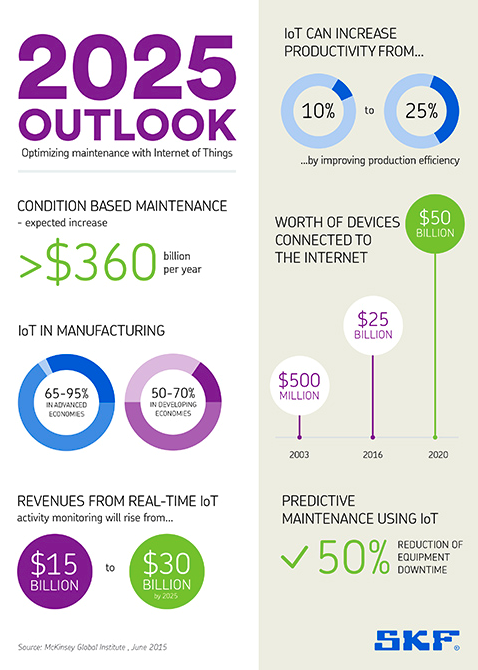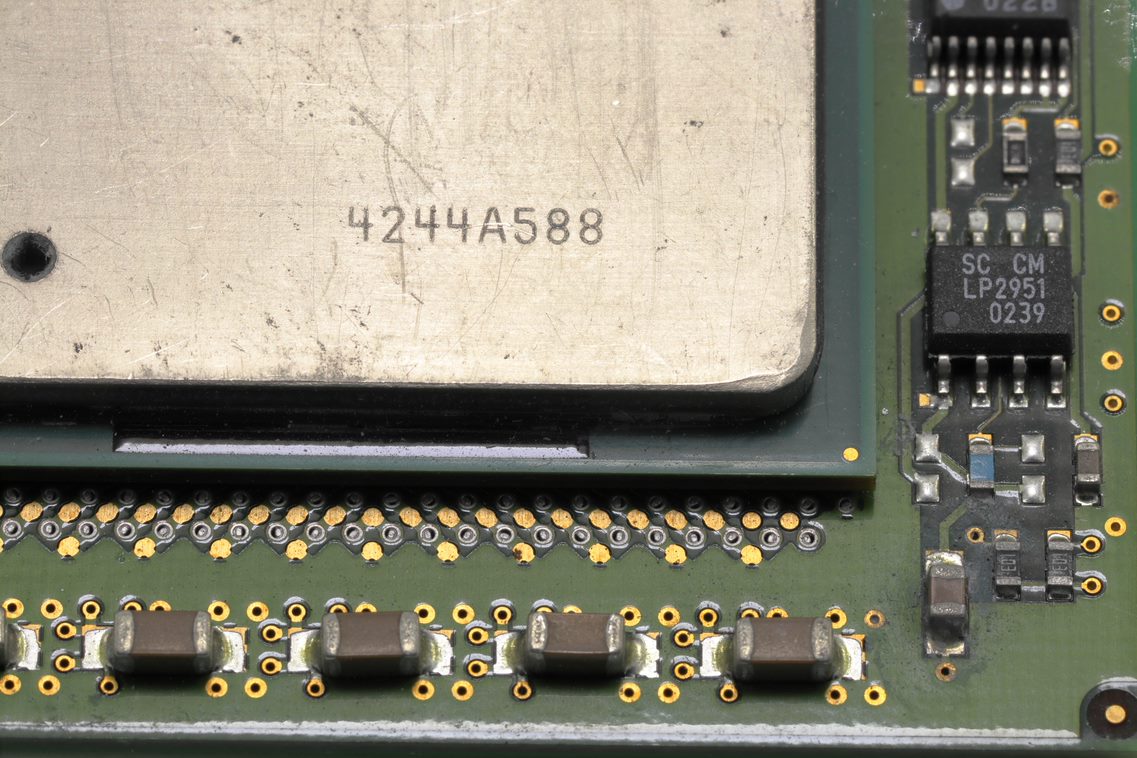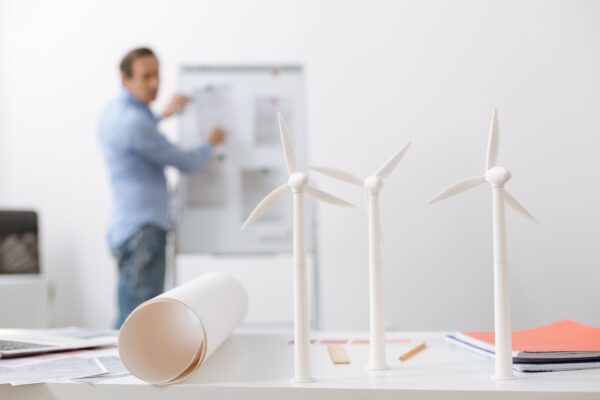The IoT is a relatively new concept and the term was first coined in 1999. However, the idea of machines communicating with one another predates this. The development of computers in the 1950s set the wheels in motion. This led to the first IoT application in the early 1980s – a drink vending machine at Carnegie Melon University that could communicate if there was a cold drink available via the internet.
Technology has significantly advanced since then, and entire manufacturing facilities and supply chains are now connected via the IoT. This practice is already present in wind energy to some extent, but it is not as prominent compared to other sectors. For example, the term Industry 4.0 is used in manufacturing to describe widespread interconnectivity and automation of machines and facilities via the IoT.
Wind energy and the IoT: a perfect match?
Wind farms are usually situated in isolated locations – often many kilometers from populated areas, or out at sea. If there is an error that results in a power outage, travelling to a site to resolve the issues could take many hours or even days. This is where the IoT could add significant value in wind energy.
Using remote access, engineers or service technicians can monitor equipment and gather data through the IoT. Data is sent from the turbines to a control center and any irregular patterns can be identified – sometimes automatically based on preset parameters. This means action can be taken to resolve an issue as soon as possible, while reducing the requirement for human interaction – often avoiding lengthy periods of downtime and high repair costs.
Some bearing manufacturers now believe that predictability is more important than longer bearing life.
It isn’t just the ability to monitor wind turbine and bearing performance in real time where the IoT adds value to wind energy. Gathering data continuously grants analysts transparency over conditions that are causing failure and enables them to build a volume of information that they need to identify patterns. As a result, operators maintain a more accurate forecast of when their bearings will fail and why. In turn, they can plan maintenance in advance – thus reducing costs and resources devoted to repairs.
How far away is wind energy from a connected future?
While the IoT and related concepts, such as predictive analytics and big data are beginning to become more prominent in wind energy, there is still work to do. In order to truly leverage the power of the IoT, companies must equip their turbines with relevant technology, such as sensors. The technology and associated knowledge is still in its infancy and is not established throughout the wind industry. However, many component manufacturers are now pursuing research with IoT applications, such as embedding sensors within bearings to monitor and evaluate performance. The future is likely to see operators making the switch to networking wind farms, and, in turn, driving automation.
SKF investing resources into supporting wind farms with IoT
SKF is also investing in developing IoT solutions. In 2017, SKF launched a joint pilot project with Honeywell to design Industrial IoT applications. That project was actually for a mine in South America but signaled a new direction for the company. SKF is now branching out into numerous sectors, including wind energy. As wind energy organizations strive to establish themselves as the leading source of renewable energy by becoming more efficient, the sector could be on the brink of entering the age of interconnectivity.

Stay tuned to the Wind Farm Management Blog for further developments in IoT and wind energy.



